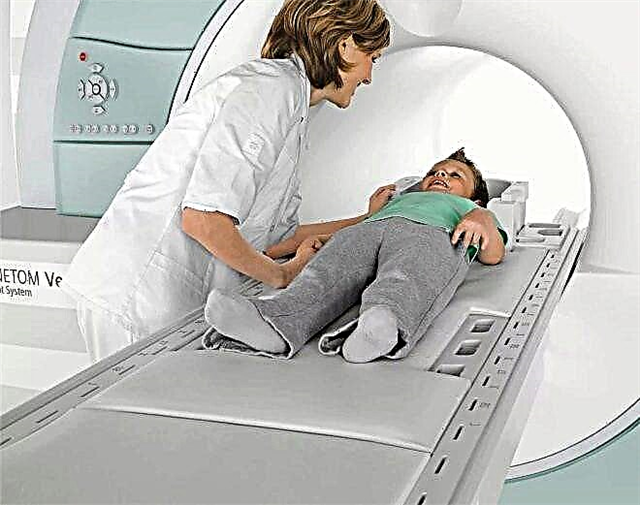
Oncological diseases, including leukemia, always cause real horror in their parents in babies. Each of the neoplasms has its own clinical features, which means it is treated differently.
What it is?
Leukemias in children are neoplasms that form in the hematopoietic system. These diseases are quite dangerous. Some of them are fatal. Every day, scientists around the world conduct numerous studies and develop new drugs that would allow treating these diseases.

With leukemia, normally functioning cells are replaced with diseased cells. Ultimately, this contributes to the violation of the correct blood formation in the baby. Since these diseases are oncological, the treatment is carried out by pediatric oncologists. Usually, a baby with leukemia is observed in a cancer center throughout his life.

More and more new cases of diseases are registered every year. Scientists note with sorrow the fact that the incidence of various forms of leukemia in children is increasing several times every year. Usually, the first signs of the disease are found in babies aged 1.5 to 5 years. Not only children, but also adults can get sick. They have a peak incidence at the age of 30-40 years.
Some medical professionals call leukemia "leukemia." In translation, this means a neoplasm of blood. In some ways, this interpretation of the disease is correct. With leukemia, the production of healthy cells of the hematopoietic system is disrupted. Atypical cells appear that are unable to perform their basic functions.

The body cannot control the formation of "low-quality" cellular elements in any way. They form independently. It is often quite difficult to influence this process from the outside. This disease is characterized by the appearance of numerous immature cells that are found in the bone marrow. This organ is responsible for blood formation in the body.
The name "leukemia" was suggested by Ellerman at the beginning of the 20th century. Later, numerous scientific studies appeared that gave an interpretation of the disease taking into account the impaired physiology. Every year, all over the world, large funds are allocated to search for drugs that would save babies with leukemia. It must be said that there are significant positive developments in this area.
Of all types of leukemia in babies, the acute form is most often found. This is a classic variant of the disease. According to statistics, in the structure of oncological leukemia, every tenth is a child. Scientists around the world are now emphasizing the importance of researching and finding new drugs for leukemia. This is due to high mortality and an increase in the incidence of blood neoplasms in children.
Causes of occurrence
To date, there is no single factor that contributes to the development of this dangerous disease in babies. Scientists put forward only new theories explaining the causes of the disease. So, they proved that exposure to ionizing radiation can lead to the development of blood neoplasms. It has a destructive effect on the blood-forming organs.
The relationship between exposure to radiation and radiation can also be proven historically. In Japan, after the largest explosion in Hiroshima and Nagasaki, the incidence of leukemia in babies has increased several times. The Japanese doctors considered that it exceeded the average value by more than 10 times!
There are also scientific versions that leukemia develops after exposure to chemically hazardous substances. Researchers have proven this fact by simulating the appearance of the disease in the laboratory in experimental animals. Scientists note that exposure to certain hydrocarbons, aromatic amines, nitrogen compounds, and insecticides contributes to the development of blood neoplasms. At present, information has also appeared that various endogenous substances can cause leukemia. These include: sex hormones and steroids, some tryptophan metabolic products, and others.

For a long time, a viral theory has existed in the scientific world. According to this version, many oncogenic viruses are genetically embedded in the body. However, with adequate functioning of the immune system and the absence of exposure to external factors, they are in a passive or inoperative state. Exposure to various causal factors, including radiation and chemicals, contributes to the transition of these oncogenic viruses into an active state. This viral theory was proposed in 1970 by Hubner.
However, not all doctors and scientists share the opinion that oncogenic viruses initially exist in the body. They explain this by the fact that in all cases, a healthy child cannot be infected from a child with leukemia. Leukemia is not transmitted by airborne droplets or contact. The cause of the disease lies deep in the body. Numerous breakdowns and disturbances in the functioning of the immune system often lead to the appearance of neoplasms of the hematopoietic organs in babies.
At the end of the 20th century, several scientists from Philadelphia found that babies with leukemia have genetic disorders. Some of their chromosomes are somewhat shorter in size than those of healthy peers. This finding was the reason for proposing a hereditary theory of the disease. It is scientifically proven that in families with cases of leukemia, the incidence of leukemia occurs three times more often.

European scientists have proven that some congenital developmental anomalies lead to an increased incidence of blood neoplasms. So, in babies with Down syndrome, the likelihood of contracting leukemia increases more than 20 times. Such a variety of different theories suggests that at present there is no single idea of the development, and most importantly, the appearance of blood neoplasms in babies. It takes more time to establish the etiopathogenesis of the disease.

Kinds
The classification of all clinical variants is rather complicated. It includes all forms of the disease that can develop in both newborns and adolescents. She gives an idea to doctors on how to determine the disease in babies. Cancer classifications are revised annually. Various adjustments are regularly made to them in connection with the emergence of new results of scientific research.
Currently, there are several main clinical groups of blood neoplasms:
- Sharp. These clinical forms of the disease are characterized by a complete absence of healthy cells. In this case, specific red blood cells are not formed. Usually acute leukemia in children has a rather severe course and is characterized by a sad, unfavorable outcome. Adequate and correctly selected therapy can somewhat prolong the life of a child.
- Chronic. It is characterized by the replacement of normal blood cells with white ones. This form has a more favorable prognosis and less aggressive course. To normalize the condition, various schemes of administration and prescription of drugs are used.
Blood neoplasms have several characteristics. So, the acute form of leukemia cannot become chronic. These are two different nosological diseases. Also, the course of the disease undergoes a transition through several successive stages. Acute leukemia can be lymphoblastic and non-lymphoblastic (myeloid). These clinical forms of pathologies have several characteristic features.
The acute lymphoblastic variant usually manifests itself already in infants. According to statistics, the peak incidence of this type of leukemia occurs at the age of 1-2 years. The prognosis of the disease is unfavorable. Pathology usually proceeds with a severe course. This clinical form is characterized by the appearance of the initial tumor focus in the bone marrow. Then characteristic changes appear in the spleen and lymph nodes, over time the disease spreads to the nervous system.

The non-lymphoblastic variant occurs equally often in both boys and girls. Typically, the peak incidence occurs at the age of 2-4 years. It is characterized by the appearance of a tumor formed from a myeloid hematopoietic lineage. Usually, the growth of the neoplasm is quite fast. When there are too many cells, they reach the bone marrow, which leads to disorders of hematopoiesis.

Acute myeloblastic variant is characterized by the appearance of a large number of immature cells - myeloblasts. Primary changes occur in the bone marrow. Over time, the tumor process spreads throughout the child's body. The course of the disease is quite severe. To identify this clinical variant of the disease, numerous diagnostic examinations are required. Untimely treatment or lack of it is fatal.
The main signs characteristic of blood neoplasms are:
- Changes in hematopoiesis indices. The appearance in the analyzes of atypical and immature cells that are completely absent in a healthy person. Such pathological forms are able to divide very quickly and increase in number in a short period of time. This feature determines the rapid growth of the neoplasm and the severity of the course of the disease.
- Anemia. A decrease in the number of red blood cells is a characteristic sign of hematopoietic neoplasms. The reduced content of erythrocytes leads to tissue hypoxia. This condition is characterized by an insufficient supply of oxygen and nutrients to all organs and tissues of the body. Oncological neoplasms are characterized by severe anemia.
- Thrombocytopenia. In this condition, the normal number of platelets decreases. Normally, these platelets are responsible for normal blood clotting. With a decrease in this indicator, the child develops numerous hemorrhagic changes, manifested by the appearance of unfavorable symptoms.

Symptoms
Usually, the first signs of leukemia are very subtle. The well-being of the child in the early stages of the disease practically does not suffer. The kid leads a normal life. It is not possible to suspect the disease "visually". Usually leukemia is detected during clinical tests or during the transition to the active stage.

Early nonspecific symptoms include: decreased appetite, rapid fatigue, impaired sleep and the duration of night sleep, slight apathy and sluggishness. Usually these signs do not cause any concern to the parents. Even the most attentive fathers and mothers will often not be able to suspect the disease at an early stage.


For some time, the child develops adverse symptoms of the disease. Skin tone changes frequently. It becomes pale or has an earthy color. The mucous membranes can erode and bleed. This leads to the development of stomatitis and gingivitis. In some cases, inflammation in the oral cavity is ulcerative-necrotic.
There may be an increase in lymph nodes. In some forms of leukemia, they become visible from the side. Usually, the lymph nodes are dense to the touch and very tightly adhered to the surrounding skin. Doctors distinguish Mikulich syndrome. This condition is characterized by enlargement of the lacrimal and salivary glands. This particular syndrome is caused by leukemic infiltration.

A decrease in the total number of platelets in the blood leads to the appearance of various hemorrhagic syndromes. They can manifest themselves in different ways in babies. The most common manifestation is bruising on the legs. They usually appear spontaneously without traumatic injury or falling. Also, babies may experience nose, gum bleeding. The most dangerous forms are bleeding into the abdominal cavity.

A fairly common symptom is the appearance of muscle pain and soreness in the joints. This is due to the development of small hemorrhages in the articular cavities. The prolonged course of the disease leads to the development of pathological excess bone fragility in the child. Bone tissue becomes loose and easily susceptible to any damage, as well as mechanical stress.
The active development of the disease leads to the appearance of disorders on the part of the internal organs. For babies with leukemia, an increase in the size of the liver and spleen (hepatosplenomegaly) is characteristic. Usually this symptom can be easily detected by palpation of the abdomen or during ultrasound examination.
Later stages are accompanied by disturbances in the work of the heart. This is largely due to severe anemia. Insufficient oxygen supply to the heart muscle provokes increased heart contractions. In a child, this condition is manifested by the appearance of tachycardia, and in some situations, even arrhythmia (irregular heart rhythm).

Body temperature with leukemia does not always change. In many babies, it can remain normal throughout the illness. Some clinical forms of leukemia are accompanied by an increase in temperature. It usually increases during a pronounced deterioration in the condition - a leukemic crisis.

The rapid development of the disease contributes to disorders in the physiological development of the child. Usually, children with leukemia lag significantly behind their peers in many health indicators. A long and severe course of the disease leads to the fact that sick children gain weight poorly. Appetite disorders and side effects of anticancer drugs, as well as the consequences of chemotherapy, lead to severe suffering for the baby.
For leukemia, a decrease in the number of leukocytes is also very characteristic. Normally, these cells are designed to protect the body from any infections. A decrease in leukocytes (leukopenia) contributes to a pronounced decrease in immunity. Babies with leukemia are several times more likely to get sick with even the simplest colds. Children with severe leukopenia are forced to undergo treatment in a special sterile box.

Diagnostics
Unfortunately, it is not always possible to detect leukemia in the early stages. Laboratory diagnostic methods should help to identify the disease in a timely manner. These tests are usually prescribed to the child by a pediatric oncologist or hematologist. Specialists diagnose all oncological neoplasms of the blood.
You can suspect a disease at home when a child has unfavorable characteristic symptoms. If they are found, you should immediately seek advice and for additional diagnostics to a hematologist. Usually, several examinations are required to establish the correct diagnosis.

The first screening test is a complete blood count. This simple and affordable test can detect a decrease in red blood cell and platelet counts. Also, a blood smear can be helpful in detecting atypical immature blood cells.An acceleration of ESR in combination with a change in the number of erythrocytes and platelets also indicates a possible leukemia in the baby.

The main study that allows you to accurately establish the presence of immature cells in the body is a spinal tap. During this procedure, the doctor makes a puncture and takes a small amount of biological material for research. The method is invasive and requires a fairly good specialist training. This study allows you to accurately identify the presence of leukemia, as well as establish its stage and morphological appearance.
Additional diagnostic methods include highly informative studies - computer and magnetic resonance imaging. They help to identify various neoplasms. Bone marrow studies make it possible to establish all the pathological changes that are present in the hematopoietic organ. MRI of the abdominal organs will help to identify an enlarged liver and spleen, as well as exclude signs of intra-abdominal hemorrhage in advanced stages of the disease.

Forecast for the future
The course of different clinical forms of the disease can be different. It depends on many factors. Some forms of leukemia are curable. It all depends on the individual characteristics of the baby. Children with multiple chronic diseases find it more difficult to recover. It is not always possible to recover from leukemia. In the later stages of the disease, the prognosis is usually poor.

Treatment
The appointment of a therapy regimen for leukemia remains with the hematologist or pediatric oncologist. Currently, several treatment programs have been developed that are aimed at prolonging remission. Relapse of the disease is treated in a hospital setting. Usually the course of the disease is undulating. Periods of complete well-being, as a rule, are followed by relapses.
The main therapy for leukemia is the appointment of chemotherapy drugs. The treatment regimen can be different and depends largely on the clinical form of the disease. Drugs for therapy can be prescribed in different dosages and differ in the frequency of use. An important task of treatment is the selection of an adequate regimen in order to cope with an excess amount of atypical tumor cells and to promote the growth of healthy ones.
In some cases, polychemotherapy is supplemented with immunostimulation. Such treatment is necessary to activate the immune system and improve the functioning of the immune system. Also, some forms of leukemia can be treated with radical methods. These include: bone marrow transplant from a donor and the introduction of stem cells. To eliminate the symptoms of severe anemia, they resort to blood transfusion.

Babies with leukemia should definitely receive high-calorie meals. Usually, the calorie content of their daily diet is slightly higher than the age norms. Such a diet is necessary for a child for an active immune system. Babies who are not getting the nutrients they need are weaker and less tolerant of chemotherapy.

Prevention
Unfortunately, to date, specific preventive measures for leukemia have not been developed. The magic cancer vaccine never came about. Every baby can get leukemia, especially if he has factors predisposing to the disease. In order to identify neoplasms as early as possible, parents should be attentive to their baby. The appearance of the first unfavorable symptoms of the disease should alert them and motivate them to seek help from a doctor.
It is important to remember that the earlier leukemia is detected, the more favorable the prognosis. Some clinical variants of the disease respond well to chemotherapy drugs. A complete blood count helps to detect many signs of leukemia in the early stages. Such a study should be carried out annually for babies with risk factors.

What are the symptoms of a child to sound the alarm to parents. The answer to this question lies in the water material.



